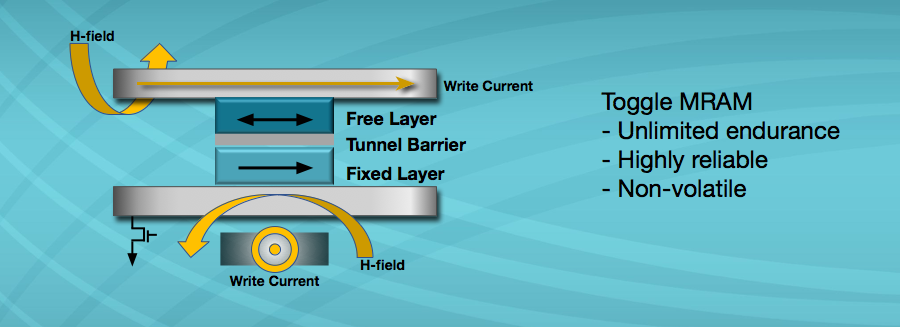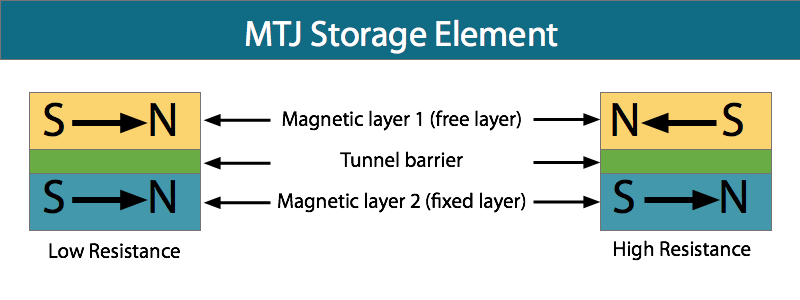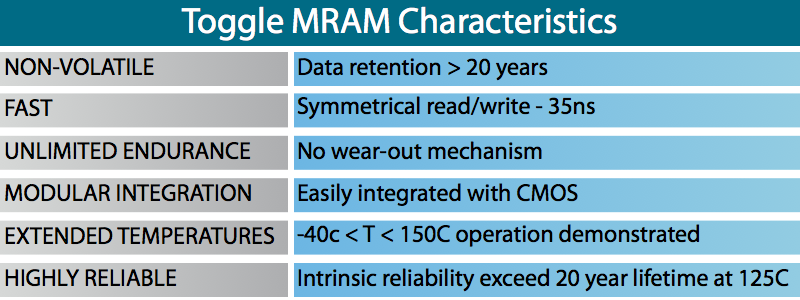
Toggle MRAM uses a 1 transistor, 1 MTJ cell to provide a simple, high-density memory. Everspin uses a patented Toggle cell design that delivers high reliability. Data are always non-volatile for 20-years at temperature.
During a read, the pass transistor is activated and data is read by comparing the resistance of the cell to a reference device. During writes, the magnetic field from Write Line 1 and Write Line 2 writes the cell at the intersection of the two lines but does not disturb other cells on either line.
Everspin MRAM products employ a one transistor, one magnetic tunnel junction (MTJ) memory cell for the storage element. The MTJ is composed of a fixed magnetic layer, a thin dielectric tunnel barrier and a free magnetic layer. When a bias is applied to the MTJ, electrons that are spin polarized by the magnetic layers traverse the dielectric barrier through a process known as tunneling.
 The MTJ device has a low resistance when the magnetic moment of the free layer is parallel to the fixed layer and a high resistance when the free layer moment is oriented anti-parallel to the fixed layer moment.
The MTJ device has a low resistance when the magnetic moment of the free layer is parallel to the fixed layer and a high resistance when the free layer moment is oriented anti-parallel to the fixed layer moment.
MRAM is a memory that uses the magnetism of electron spin to provide non-volatility without wear-out. MRAM stores information in magnetic material integrated with silicon circuitry to deliver the speed of SRAM with the non-volatility of Flash in a single unlimited-endurance device.

Everspin MRAM devices are designed to combine the best features of non-volatile memory and RAM to enable "instant-on" capability and power loss protection for an increasing number of electronic systems.
Toggle MRAM Products
Toggle MRAM Cross Reference Guide
